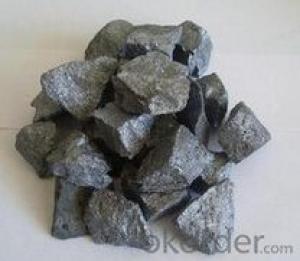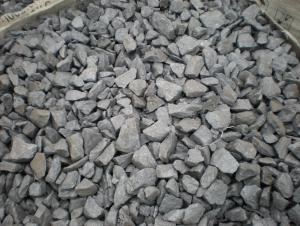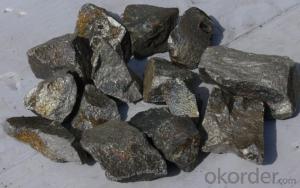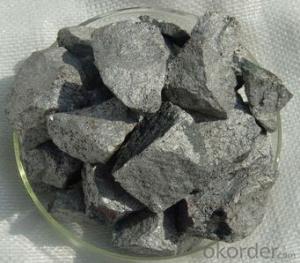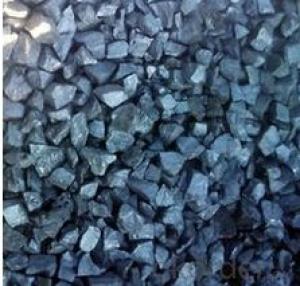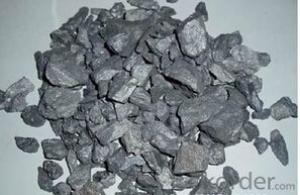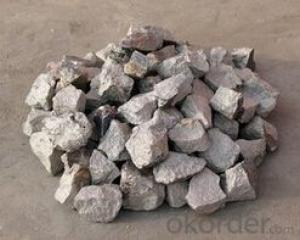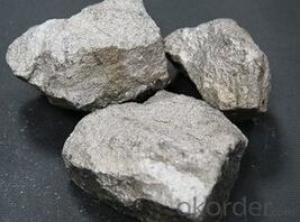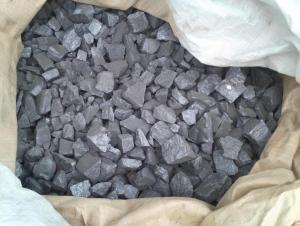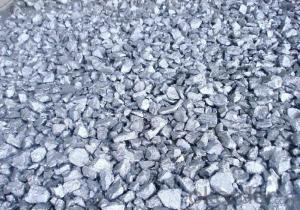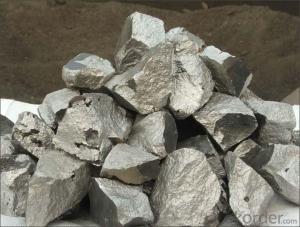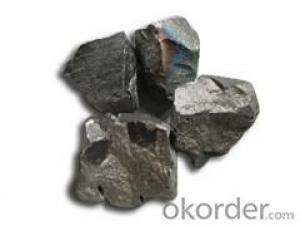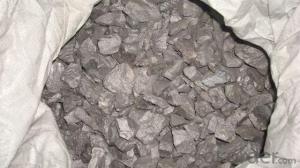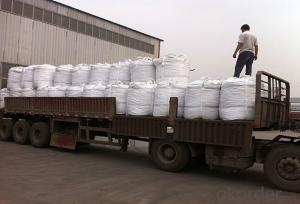Vietnam Ferro Silicon FeSi 72%
- Loading Port:
- China Main Port
- Payment Terms:
- TT OR LC
- Min Order Qty:
- -
- Supply Capability:
- -
OKorder Service Pledge
OKorder Financial Service
You Might Also Like
Specifications
Atomised Ferrosilicon 15%
Si:14-16%
CIQ,ISO,SGS Certification
Free Sample
10 years history
Atomised Ferro Silicon 15 is a specialised powder product formed by melting FeSi75 with scrap and casting into a high pressure water jet. Particle size is typically between 212 microns and 20 microns. The principal properties of FeSi15%
are magnetism, corrosion resistance and density.
Atomised Ferro Silicon 15% is mixed in water to create a dense medium and finds uses in the mining and scrap processing industries. Dense medium separation is a gravity separation technique which creates a medium with a specific density.
This medium allows lights to float and heavies to sink, thus permitting separation due to density. The process typically
separates aluminium, magnesium and mixed heavy metals such as copper alloys, thereby increasing overall scrap
metal recycling rates. After sizing, the mixed feed is screened and then sent to a drum containing magnetite media
which removes the lower density waste (rubber, plastic, etc) and light metals such as magnesium alloys.
The heavy concentrated scrap is then directed to a second drum containing FeSi media which separates the aluminium
from other metals. These two media, namely Magnetite and FeSi, create different media densities and can be adjusted,
within certain limits.
Atomised Ferro Silicon 15% is usually supplied in big bags or in steel drums.
Bulk chemical composition | |
| Element | Specification, % |
| Silicon | 14-16 |
| Iron | 78-82 min |
| Carbon | 0.5-1.2 max |
| Aluminium | 0.04 typical |
| Titanium | 0.05 typical |
| Physical Properties | |
| Relative density | 6.7-7.1 g/ml |
| Apparent density | 3.3-4.0 g/ml |
| Magnetic susceptibility | 59m3/kg |
| Non-magnetics | 1.5%max |
FACTORY:
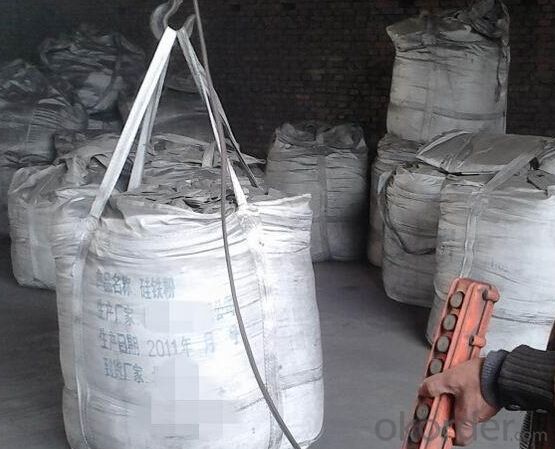
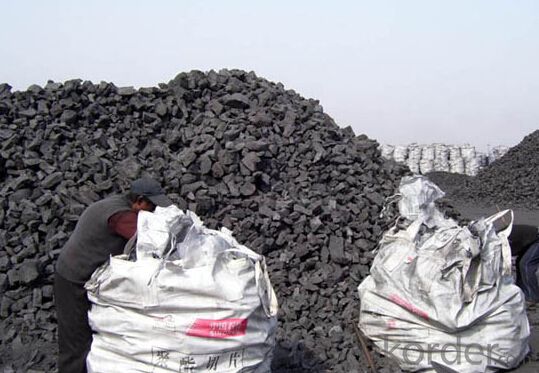
- Q:What is the coefficient of thermal expansion of cemented carbides?
- Carbide is also divided into many grades, so the coefficient of thermal expansion is not exactly the same.
- Q:What kind of industry can use carbide?
- The metal processing tool, electronic industry to do the drill bits, the medical industry mainly do the drill. Carbide tools have been used in various industries, known as industrial teeth.
- Q:Chengdu which has carbide scrap acquisition point?
- Bars of 75000 yuan / kg (Fu Xujian) Zhejiang Zhoushan self-employed waste tungsten 150-200 yuan / kg, Hebei Hengshui Gucheng County Sindh rare metals tungsten tailings 100-300 yuan / ton Guangzhou lechran gold bars 1200 yuan / kg, Zhengzhou Zhengzhou Hongsen tin small PCB tungsten steel drill 160-190 yuan / kg in Zhejiang Taizhou
- Q:Carbide grades, properties and applicable ranges
- (2) tungsten titanium cobalt (WC+TiC+Co) cemented carbide (YT);Because of the hardness and melting point of TiC was higher than WC, so compared with YG, the hardness, wear resistance, hardness increases, bond high temperature, strong antioxidant capacity, and will generate TiO 2 at high temperature can reduce the adhesion. But poor thermal conductivity, low flexural strength, so it is suitable for processing steel etc. the toughness of materials.
- Q:What is hard alloy grinding?
- Its scope of application and the artificial diamond plays a complementary role. Cubic boron nitride wheel grinding of steel parts the efficiency ratio of corundum wheel to nearly a hundred times, five times higher than the diamond grinding wheel, but less than the diamond grinding of brittle materials.The diamond grinding wheel than boron carbide, silicon carbide, corundum and other general grinding blade grain made of sharp corner, small abrasion, long service life, high productivity, good processing quality, but the price is expensive, is suitable for the grinding of hard alloy, ceramic, semiconductor and other high hardness brittle hard processing material
- Q:General carbide and high-speed steel blade cutting speed? (about the range is OK.)
- Carbide cutting tools, cutting speed limit is 100 meters / minute, usually 50-70 meters per minute;High speed steel cutting tool cutting line speed limit is 10 meters / minute, commonly used 5-8 meters / min..
- Q:What is steel bonded carbide? What are its characteristics?
- Steel bonded hard alloy is a kind of material between steel and hard alloy, has the following characteristics: good technological properties with processing and heat treatment, under the annealed state, can be used in machining, car equipment and tool milling, planing, milling, drilling and other mechanical processing. Also, forging welding. Compared with hard alloy, low cost, wide application range.
- Q:What is the difference between hard alloy and steel
- Tungsten carbide hard alloy belongs to, but not necessarily tungsten steel, now Taiwan and Southeast Asian countries customers love to use the word if they talk with tungsten, carefully into the deep, we will find that most of us. Or to the hard alloy and tungsten steel the difference is: also called hard alloy tool steel or high speed steel, tungsten steel is the raw material for smelting molten steel in steelmaking process for adding tungsten as a, also called high speed steel or tool steel, the tungsten content in 15-25%, The hard alloy is used; powder metallurgy of tungsten carbide as subject and cobalt or other metal bonded together and sintered, the tungsten content of more than 80% in general. Simply put all the hardness more than HRC65 as long as things go can be called cemented carbide alloyIs a kind of tungsten carbide hardness between HRC85 and 92, is often used as a knife
- Q:What's the use of recycling cemented carbide?
- Refined tungsten, northern recovery mostly shipped to Hebei, Xingtai.
- Q:What does American standard cemented carbide grain size C mean?
- Therefore, their composition can change in a certain range (such as the composition of titanium carbide in TiC0.5 ~ TiC changes), chemical formula does not conform to the rules of valence. When the dissolved carbon content exceeds a certain limit (such as titanium carbide in Ti: C=1: 1), the lattice type will be changed, the original metal lattice metal lattice into another form, then the interstitial solid solution called interstitial compounds. Metal carbides, especially B, B, IV V VI B metal carbide melting point is above 3273K, the TAC hafnium carbide, respectively 4160K and 4150K, is the highest point currently know material. Most of the carbide hardness large, their microhardness is higher than 1800kg mm2 (micro hardness is hardness says one way for hard alloy and hard compound, microhardness 1800kg mm2 is equivalent to a diamond a Mohs hardness of 9). Many carbides are difficult to break down at high temperatures, and their antioxidant power is stronger than their constituent metals. Titanium carbide has the best thermal stability in all carbides, and is a very important metal type carbide. However, in an oxidizing atmosphere, all carbides are readily oxidized at high temperatures, which can be said to be a major weakness of carbides.
1. Manufacturer Overview |
|
|---|---|
| Location | |
| Year Established | |
| Annual Output Value | |
| Main Markets | |
| Company Certifications | |
2. Manufacturer Certificates |
|
|---|---|
| a) Certification Name | |
| Range | |
| Reference | |
| Validity Period | |
3. Manufacturer Capability |
|
|---|---|
| a)Trade Capacity | |
| Nearest Port | |
| Export Percentage | |
| No.of Employees in Trade Department | |
| Language Spoken: | |
| b)Factory Information | |
| Factory Size: | |
| No. of Production Lines | |
| Contract Manufacturing | |
| Product Price Range | |
Send your message to us
Vietnam Ferro Silicon FeSi 72%
- Loading Port:
- China Main Port
- Payment Terms:
- TT OR LC
- Min Order Qty:
- -
- Supply Capability:
- -
OKorder Service Pledge
OKorder Financial Service
Similar products
New products
Hot products
Related keywords
